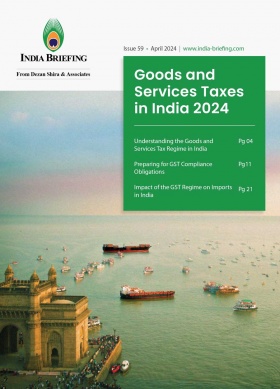India’s New Labor Codes Near Implementation: What Foreign Firms Need to Know
The long-awaited implementation of India’s four new labor codes, passed by the Indian Parliament between 2019 and 2020, is nearing reality. As per media reports, currently, 25 of the country’s 28 states have finalized their draft rules under these laws.
The implementation of India’s four labor codes is on the horizon, with 25 out of the 28 Indian states having finalized the draft rules for these laws. In October 2024, it was reported that states like West Bengal, which had earlier expressed concerns about the four labor laws, have now agreed to prepare the necessary legislation for enforcement.
It is important to note that states such as Tamil Nadu has partially released labor code drafts. While the southern state is yet to release a draft on the Rules on Code on Social Security (2020), Delhi has not released draft under Code on Social Security (2020), Occupational Safety, Health and Working Conditions Code (2020) and Industrial Relations Code (2020).
However, states/union territories like West Bengal, Meghalaya, Nagaland, Lakshadweep, and Dadra & Nagar Haveli and Daman & Diu have not prepared or released drafts under any of the four new labor codes.
With the introduction of the new labor codes, India aims to strike a balance between enhancing labor market flexibility and improving workers’ rights and welfare. This balance will have significant implications for both domestic and foreign businesses.
The four labor codes—Code on Wages, Industrial Relations Code, Social Security Code, and Occupational Safety, Health and Working Conditions Code—aim to simplify existing laws, making compliance easier and protecting workers’ rights under a cohesive regulatory framework. The new codes also decriminalize minor offenses, emphasize skill development, and streamline dispute resolution mechanisms.
While the central government has not yet announced an official implementation date, media reports suggest that the new labor codes could be in force by next year.
What are India’s four new labor codes?
- The Code on Wages (2019): Ensures all workers receive minimum wages and timely payments, with a uniform definition of “wages” across all codes to avoid multiple interpretations and reduce litigation.
- The Code on Social Security (2020): Focuses on expanding social security benefits to all workers, including gig and platform workers. It introduces a Re-skilling Fund and allows the government to extend benefits through the Employees’ State Insurance Corporation (ESIC) and Employees’ Provident Fund Organization (EPFO).
- The Occupational Safety, Health and Working Conditions Code (2020): Improves workplace safety by including provisions for annual health check-ups and requiring employers to formalize employment contracts by issuing appointment letters. This enhances job security and ensures access to statutory benefits.
- The Industrial Relations Code (2020): Simplifies compliance for businesses while safeguarding workers’ rights, including dispute resolution mechanisms and protections for collective bargaining.
Key benefits and reforms
- Minimum wage guarantee: A statutory right to minimum wages and timely payments for all workers promotes inclusive development.
- Formal contracts: Employers must issue formal appointment letters, improving job security and ensuring access to benefits like minimum wages and social security.
- Social security for gig workers: The new codes extend social security benefits to gig and platform workers, supported by contributions from both aggregators and the government.
- Equal benefits for fixed-term workers: Fixed-term employees now qualify for the same benefits as permanent workers, including gratuity after one year of service.
- Expanded leave entitlements: Workers can earn annual leave after 180 days of work (down from 240), with the option to encash unused leave.
- Broader provident fund coverage: The Employees’ Provident Fund will now apply to all industries, not just previously specified sectors.
Role of states and central governments
Under the Constitution of India, labor is a subject in the Concurrent List where both the central and state governments are competent to enact legislation subject to certain matters being reserved for the central government. However, in cases where central and state laws conflict, the central law prevails unless the state’s law receives Presidential assent. States are responsible for drafting rules to address areas not fully covered by the codes, such as working hours, overtime, and trade union processes.
Setting the minimum wage in India
Under the Code on Wages Act of 2019, workers in all industries are entitled to receive minimum wages set by their respective state governments. Labor matters fall under both state and central jurisdiction, as per constitutional law, leading to a multi-jurisdictional regulatory framework.
Previously, only workers in certain industries (representing 40 percent of the total workforce) were eligible for minimum wages. However, since the wage code’s enactment in 2019, no further progress has been made toward establishing a national minimum wage for Indian workers.
India’s government has not prioritized implementing a national minimum wage, considering it a highly divisive issue that could negatively affect employers, particularly in the post-pandemic recovery period.
Relevance of the new labor codes for foreign companies in India
Upon implementation of the four labor codes, foreign companies operating in India will need to understand and adapt to these changes to remain compliant and maintain smooth business operations.
- Streamlined laws and compliance: The new labor codes consolidate over 29 national labor laws into four comprehensive codes, reducing complexity. This streamlining simplifies the regulatory environment, which is particularly advantageous for foreign companies previously struggling with India’s intricate labor regulations.
- Increased flexibility in workforce management: The Industrial Relations Code allows companies with up to 300 employees to hire and fire workers without government approval, previously set at 100 employees. This change offers foreign companies more flexibility in managing their workforce but requires fair practices to avoid industrial disputes.
- Broader social security coverage: The Social Security Code extends benefits to a wider range of workers, including gig workers. Foreign companies will have to contribute to social security schemes for their employees, which may raise operational costs but ensure a more secure and productive workforce.
- Enhanced workplace safety: The Occupational Safety Code mandates stricter workplace safety standards, including health check-ups and safety committees. Foreign companies must invest in improving workplace conditions to comply with these regulations, benefiting from a healthier workforce in the long run.
- Clear guidelines for contract workers and fixed-term employment: The new codes provide clarity on contractual and fixed-term employment, ensuring that fixed-term workers receive the same benefits as permanent employees. This may increase labor costs but allows for more flexibility in hiring for specific projects.
- Stricter compliance and penalties: The labor codes introduce more stringent compliance requirements, with higher penalties for violations. Foreign companies must ensure their HR and legal teams are familiar with the new regulations and implement strong compliance systems to avoid penalties and ensure smooth operations.
Business advisory from Dezan Shira & Associates
Foreign companies operating in India should prioritize understanding the regulatory landscape surrounding the new labor codes and related regulations to ensure compliance with the latest requirements for employee rights, wages, and workplace safety. Strengthening HR policies is essential; companies should revise their practices to align with the new codes, focusing on formal employment contracts, wage structures, and social security contributions for all types of workers, including gig and fixed-term employees. Developing a robust compliance framework that includes regular audits, training for HR and management teams, and monitoring systems for adherence to labor laws will help avoid penalties and disputes. Additionally, investing in workplace safety measures and health programs is crucial to meet the Occupational Safety Code requirements, ensuring a safe and compliant working environment for employees.
Establishing channels for open communication regarding employees’ rights and benefits under the new labor codes will enhance transparency and foster a positive workplace culture. It is advisable to engage local legal counsel or compliance experts to navigate the complexities of Indian labor laws, ensuring that all operational practices are legally sound and up to date. Companies should also anticipate potential increases in operational costs due to compliance with new regulations, including contributions to social security and enhanced workplace safety measures. Finally, monitoring state-specific regulations is important, as labor laws can vary significantly across different regions in India.
Frequently asked questions
- What are the four new labor codes in India?
The four codes are the Code on Wages, Code on Social Security, Occupational Safety Code, and Industrial Relations Code, aimed at simplifying labor laws and enhancing worker protections. - How will the new codes affect foreign companies in India?
The codes streamline compliance, increase workforce management flexibility, expand social security coverage, and enforce stricter workplace safety standards, requiring adaptations in HR practices. - What benefits do the new codes provide for employees?
Benefits include guaranteed minimum wages, formal contracts, social security for gig workers, equal benefits for fixed-term employees, and expanded leave entitlements. - What compliance measures should foreign firms adopt?
Firms should revise HR policies regarding contracts and wage structures, develop a compliance framework with audits and training, and ensure adherence to the new regulations. - Are there regional differences in the labor codes’ implementation?
Yes, labor laws can vary significantly across different states and Union Territories in India. Foreign companies should monitor state-specific regulations and consult local legal counsel to navigate the complexities of compliance in their respective regions.
(US$1 = INR 84.08)
About Us
India Briefing is one of five regional publications under the Asia Briefing brand. It is supported by Dezan Shira & Associates, a pan-Asia, multi-disciplinary professional services firm that assists foreign investors throughout Asia, including through offices in Delhi, Mumbai, and Bengaluru in India. Dezan Shira & Associates also maintains offices or has alliance partners assisting foreign investors in China, Hong Kong SAR, Vietnam, Indonesia, Singapore, Malaysia, Mongolia, Dubai (UAE), Japan, South Korea, Nepal, The Philippines, Sri Lanka, Thailand, Italy, Germany, Bangladesh, Australia, United States, and United Kingdom and Ireland.
For a complimentary subscription to India Briefing’s content products, please click here. For support with establishing a business in India or for assistance in analyzing and entering markets, please contact the firm at india@dezshira.com or visit our website at www.dezshira.com.
- Previous Article India-Denmark Strategic Partnership Grows, from Green Energy to Pharmaceuticals
- Next Article What Uttar Pradesh’s New Master Plans for Noida and YEIDA Mean for Investors








